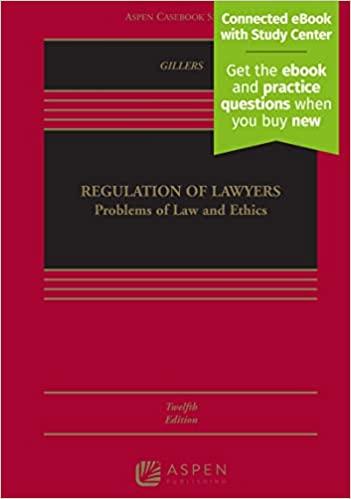Question
7/quizzes/1736192/take/questions/30769463 On August 25, 2020, Kyle Howard Rittenhouse fatally shot two people, Joseph Rosenbaum and Anthony Huber, and wounded another person, Gaige Grosskreutz, in Kenosha,
7/quizzes/1736192/take/questions/30769463
On August 25, 2020, Kyle Howard Rittenhouse fatally shot two people, Joseph Rosenbaum and Anthony Huber, and wounded another person, Gaige Grosskreutz, in Kenosha, Wisconsin. The shootings occurred during civil protests that
followed the shooting of a black man, Jacob Blake, by a white police officer. Rittenhouse was charged with two counts
of homicide, one count of attempted homicide, two counts of reckless endangerment. At trial, Rittenhouse asserted
"self defense," and the jury unanimously acquitted him of all criminal charges.
This case touches on many issues that we have covered in our class discussion and materials, and its occurrence falls
with our national tragedies of racially motivated violence. For purposes of this question, let's focus on the relationship
between criminal law/criminal procedure and tort law. Although Rittenhouse was found "not guilty" of homicide, attempted homicide, and criminally reckless endangerment, are there any possible civil legal claims or remedies
available for Rosenbaum and Huber and Grosskreutz, and if so why would such claims or remedies be possible?
- A. No tort claims or remedies are possible because the jury acquitted Rittenhouse and he cannot be tried twice for the same crimes based on the Double Jeopardy clause in the U.S Constitution.
- B. Yes, tort claims and remedies are possible because the criminal case involved the state government and the defendant. So, even though that case was resolved, Rosenbaum, and Huber and Grosskreutz could bring a civil lawsuit against Rittenhouse for wrongful death or negligence
- C. Yes, tort claims and remedies are possible because determining that Rittenhouse was not guilty of homicide, attempted hmicide, and reckless endangerment relied on the evidentiary burden of proof "beyond a reasonable doubt and the evidentiary burden of proof for torts like wrongful death and negligence is "more likely than not" which is a lower standard that still might be possible to meet under the facts of the case. O D. No tort claims or remedies are possible because once you have died, there is no personal "estate" or family members that possesses your interests such as your rights and property after you die.
- E. Answers (A) and (D).
- F. B and C
Step by Step Solution
There are 3 Steps involved in it
Step: 1

Get Instant Access to Expert-Tailored Solutions
See step-by-step solutions with expert insights and AI powered tools for academic success
Step: 2

Step: 3

Ace Your Homework with AI
Get the answers you need in no time with our AI-driven, step-by-step assistance
Get Started


